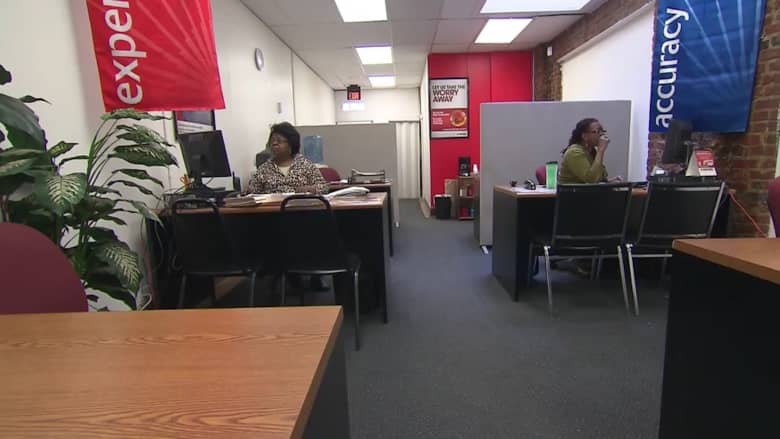دبي، الإمارات العربية المتحدة (CNN) -- هل يغزو عقلك أفكارًا غير عقلانية أحيانًا، الأمر الذي يشعرك بالقلق، أو أنّك على وشك الإصابة بنوبة هلع ربما؟
سلسلة من الأسئلة التي قد تطرحها على نفسك تبحث في شرعية تلك الأفكار المزعجة ومنظورها، قد تهدئ من توترك. وتُعرف هذه العملية باسم الاستجواب السقراطي، تيمنًا بالفيلسوف اليوناني سقراط، المؤثر المعروف بطرح الأسئلة على الآخرين لمساعدتهم على تحسين تفكيرهم والوصول إلى الحقيقة بشكل أسرع، وهي تقنية شائعة يقوم المعالجون بتدريب المرضى عليها في العلاج السلوكي المعرفي.
وأوضح الدكتور دانييل ر. سترونك، أستاذ علم النفس في جامعة أوهايو ستايت، أنّ إعادة هيكلة عقليتك أمر مهم لأنّ "التأثير القوي لأفكارك على عواطفك مردّه لكونك تصدّق الأفكار، وليس لأنّها صحيحة بالضرورة".
وأضاف: "لذا، إذا سمحنا لأنفسنا بتصديق أمور مزعجة وعارية من الصحة، فإن ذلك يجعل حياتنا العاطفية أكثر صعوبة".
من جهته أوضح الدكتور جيمس أوفرهولسر، عالم النفس السريري وأستاذ الاكتئاب والانتحار في جامعة كيس ويسترن ريزيرف بكليفلاند، أنّ الأسئلة السقراطية رغم أنها تستخدم في العلاج السلوكي المعرفي، لكن ليس ضروريًا أن يكون لديك معالج كي تلجأ إليها وتفيد منها. فالاختصاصي مفيد لحل المشاكل، وتحقيق الأهداف بطريقة يصعب على العديد من الأشخاص القيام بذلك بمفردهم.
في ما يلي كيف تجيبون على بعض الأسئلة السقراطية شائعة الاستخدام. بحسب الخبراء، فإن الأسئلة والصياغة قد تختلف اعتمادًا على المصدر أو المعالج أو تجربة المريض، لكن الهدف يبقى ذاته.
العمل من خلال تصوّراتك الشخصية
وأشار سترونك إلى أنّ طرح الأسئلة السقراطية لا يشير إلى أنّ الاضطراب العاطفي هو نتيجة حصرية أو دائمة لرؤية غير دقيقة، بل إنّ هذا التحيّز قد يتفاقم ويساهم في الضيق.
الذاتية الفردية تلعب دورًا محوريًا في تحديد كيف أنّ شخصين يواجهان التحدي عينه بيد أنّ تجاربهما واستجاباتهما العاطفية مختلفة، فيشعر أحدهما بالسلبية والهزيمة، فيما يرى الآخر الموقف كفرصة للنمو الشخصي أو إظهار النعمة.
عندما تريد تطبيق الأسئلة السقراطية على الأفكار أو المعتقدات المزعجة، ابدأ بكتابة الفكرة.
ربما تشعر بالقلق من أنك ستحرج نفسك أو تفشل بطريقة ما، أثناء العرض التقديمي التالي في العمل.
وقال سترونك: لكي تفهم الفكرة والمعتقدات الكامنة وراءها بشكل أفضل، اسأل نفسك ما هو الأمر المزعج جدًا في هذا السيناريو. ربما اعتقادك بأن الناس يرونك غير كفء، أو أنك ستُطرد من عملك.
ولفت سترونك إلى أن الأبحاث أظهرت أن الأشخاص الذين يعانون من تحديات تتعلق بالصحة العقلية عادة ما يكون لديهم بعض التحيّزات، وعدم الدقة في طرق تفكيرهم. فمن يعانون من الاكتئاب، على سبيل المثال، قد ينظرون إلى الأحداث بطريقة سلبية للغاية، في حين أن من يعانون من القلق غالبا ما يرون التهديدات على أنها وشيكة، وأكثر كارثية ممّا ستكون عليها في الواقع.
ولفت سترونك إلى أنه من خلال التحقق من وجهات نظرك، يمكنك في كثير من الأحيان التقليل من شدة ردود أفعالك العاطفية، ومن ثم تكون قادرًا على التعامل بشكل أفضل مع الصعوبات.
التدريب المنتظم على الأسئلة السقراطية
يمكن أن تشمل الأسئلة السقراطية الشائعة الأخرى ما يلي، رغم أن بعضها قد يكون مخصصًا لتجربة المريض:
● هل أبني تفكيري هذا على حقائق أم مشاعر؟
● هل أقفز إلى الاستنتاجات أم ألجأ إلى السيناريو الأسوأ؟
● هل يمكن أن أسيء تفسير الأدلة؟ هل أقوم بأي افتراضات؟
● إذا نظرت إلى هذا الوضع بشكل أكثر إيجابية، هل يختلف؟
● هل سيكون هذا الأمر مهماً بعد عام من الآن؟ خمس سنوات من الآن؟
● هل يمكن أن يكون لدى الآخرين تفسيرات مختلفة لهذا الموقف؟
يحتوي موقع موارد المعالج Therapist Aid على نسخة مطبوعة مجانية تحتوي على 10 أسئلة سقراطية يمكنك استخدامها لتحدي الأفكار غير العقلانية.
وهناك طريقة أخرى للتعرف على هذا النهج من خلال قراءة كتاب "العقل قبل المزاج: غيِّر ما تشعر به عبر تغيير طريقة تفكيرك"، للمؤلفين دينيس غرينبرغر وكريستين أ. باديسكي، وهو كتاب أوصى به سترونك.
يمكن أن يساعدك التدرب على الأسئلة أيضًا كي تصبح أكثر وعيًا بشكل عام إذا واصلت القيام بذلك باستمرار.
وخلص سترونك إلى أنه يود "أن أشجع الأشخاص الذين يحاولون تعلم كيف يعيدون تقييم أفكارهم لتجربة أسئلة مختلفة. قد تجد أن بعضها فعّال بشكل خاص بالنسبة لك".







